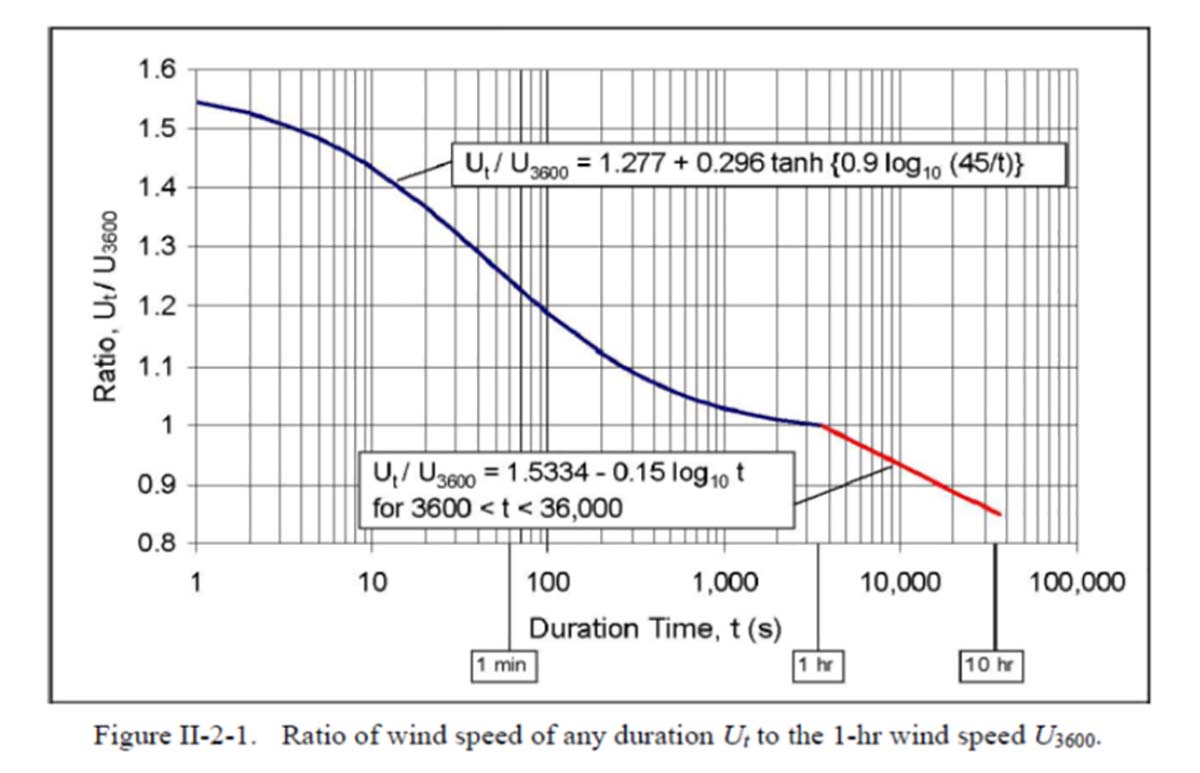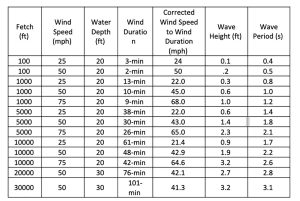
Wind, Waves, What Else?
Published on January 14, 2024For many of us, our daily lives revolve around the wind. Ask any sailor; the presence of wind can literally make or break their day. Maybe you curse the wind when trying to winterize and cover boats for the season; but your boaters praise the wind for powering their sunset sail. But wind is important for more than just the marina industry, and knowing the power it can bring is equally important.
People have cared about the weather for as long as we can remember, with some claiming that the Babylonians tried to predict the weather based on cloud patterns and astrology as early as 650 BC. But besides caring about whether or not we will have a sunny day for boating, knowing wind history and patterns is critical when it comes to designing structures, particularly at a coastal interface.
Calculating Wind Speed
There are many reasons designers may need to use wind information, including calculating wind loads on a building or dock structure, quantifying the role of winds in dune formation, sizing wind-generated waves, or determining the impact wind has on coastal currents and storm surge. So where can we find said wind information? Fortunately, airports have stations which have been collecting wind data since around the 1970s. An online database compiles the relevant information including wind direction and speed.

Wind duration can vary significantly depending on the time it describes. The speed is calculated by the average wind speed in that specific timeframe. So, a 3-second wind is the average wind speed observed in 3 seconds, and an hourly wind averages the wind speeds recorded over that entire hour. Understandably, the 3-second wind can be much higher than the 1-hour wind, because gusts are observed in that short duration.
The reason wind durations matter is because different wind durations are used for various applications for the winds. Building codes specify a 3-second wind speed, or gust, for determining the wind loads that will impact the structure. This could be used for designing a dock or boardwalk, for example. On the other hand, an hourly wind is what will often impact wave generation.
Wind-Generated Waves
Winds generate waves and in lakes and some other bodies of water, those are the only type of waves that will occur, with the exception of boat wake. Swell waves are not directly associated with a storm event and are produced a long distance away from the site they eventually impact. Boat wakes are generated from boats and are primarily dependent on the speed of the boat.
Wind-generated waves are dependent on a few things. A combination of the fetch, or distance over water which the wind blows, the water depth, wind speed, and wind duration determine the wave conditions at the site in question. A fetch-limited wave occurs when the wave energy is limited by the length or size of the wave generation area. The interesting thing is that various wind speeds and durations yield different wave conditions, so an iterative process must be implemented to find which speed-duration combination yields the largest wave height and or wave period to design for.
The Coastal Engineering Manual outlines how to iterate the wind duration to adjust the relevant wind speed so the condition is fetch-limited. In most cases, wave propagation into a fully developed state is defined by the fetch-limited condition. The exception to this is duration-limited wave growth, which, as stated in the Coastal Engineering Manual, relies on a very rapid wind growth in an area with no near boundaries, such as shorelines. When considering a marina basin, this duration-limited condition cannot apply, as the marina itself represents a nearby boundary. Thus, the fetch-limited condition should be used. To achieve this, the wind speed used in wave predictions must have its duration modified to meet the conditions for a fetch-limited state, to generate an accurate, site-specific prediction. The major criterion for a fetch-limited condition is defined by Equation (1):
t,x,u= 77.23 X 0.76/u 0.34 g 0.33
In the equation above, tx,u represents the required wind duration for a fetch-limited condition, X represents the fetch, u represents a wind velocity, and g represents gravity. As previously discussed, the wind speed and duration are interrelated. Thus, Figure II-2-1 from the CEM, when used with Equation (1), allows for an iterative analysis to determine an appropriate wind speed and duration to achieve a fetch-limited condition. For small lakes and rivers, this condition can be achieved with 1–5-minute wind durations. For larger bodies of water, it may take over an hour, resulting in lower speeds than those reported by airports on 2-minute durations.
This can be difficult to determine without an iterative excel spreadsheet or some other type of program. Table 1 includes a few examples that can be considered.
Questions to Ask
This goes to show that there are a few questions that need to be asked when you consider designing something to various wind speeds. Keep in mind there may be building codes to follow, but with marine design, sometimes you must improvise and use engineering judgement to create an effective design. Additional guidance for estimating wave growth is provided in the Coastal Engineering Manual, 2003.
| Categories | |
| Tags |





